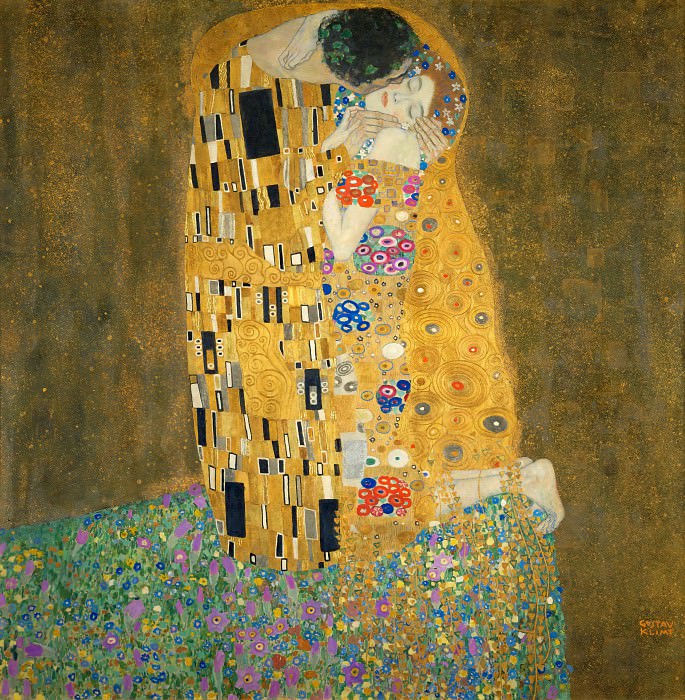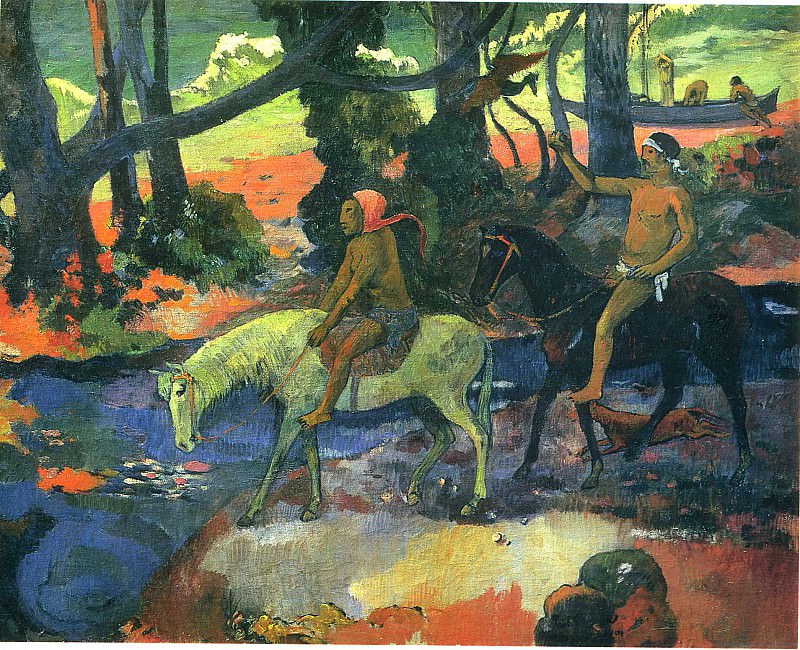Richard Diebenkorn: A Legacy of Abstract Expressionism
Richard Diebenkorn, a pivotal figure in American abstract expressionism and modern art, carved out a unique space in the art world with his distinctive approach to painting. His work, marked by an exquisite balance between form and color, reflects a deep exploration of space and structure, making him a celebrated artist whose influence extends across various artistic disciplines.
Early Life and Artistic Development
Richard Diebenkorn was born on April 22, 1922, in Portland, Oregon. Raised in San Francisco, he was exposed to a rich cultural environment that would later significantly influence his artistic style. His initial education at the University of California, Berkeley, where he studied art and design, laid the foundation for his future endeavors. Diebenkorn’s early work was rooted in figurative painting, but his exposure to the modernist movements of the mid-20th century catalyzed his shift towards abstract expressionism.
The Evolution of Diebenkorn’s Style
Diebenkorn’s artistic journey is characterized by a profound evolution from representational to abstract art. His early works, heavily influenced by the figurative tradition, gradually transformed into a more abstract and experimental form. This transition is particularly evident in his Ocean Park series, which marked a significant departure from his earlier work. The Ocean Park series, initiated in the early 1960s, is often hailed as his masterpiece, reflecting his deep engagement with abstraction and spatial composition.
In these works, Diebenkorn employed a unique color palette and geometric abstraction to explore the interplay of space and structure. His use of color was not merely decorative but served as a fundamental element in his exploration of spatial relationships. The subtle shifts in color and form within these paintings reveal his meticulous attention to the balance between chaos and order.
The Ocean Park Series
The Ocean Park series stands as a testament to Diebenkorn’s mastery of abstraction. These paintings, named after the neighborhood in Santa Monica where he lived and worked, capture a sense of place through a complex interplay of color, form, and texture. Unlike traditional landscapes, Diebenkorn’s Ocean Park paintings do not represent specific geographical locations but rather evoke the essence of the environment through abstract forms.
In these works, Diebenkorn utilized a grid-like structure to create a sense of order and coherence. This approach allowed him to explore the spatial dynamics of his compositions, creating a dialogue between the geometric and the organic. The paintings are characterized by their large, flat areas of color, which are often interrupted by more intricate, detailed elements. This contrast creates a sense of depth and movement within the work, inviting viewers to engage with the painting on multiple levels.
The Influence of Diebenkorn’s Work
Diebenkorn’s impact on the art world extends beyond his own paintings. His innovative approach to abstraction and spatial composition has influenced a wide range of artists and movements. His work is often cited as a significant influence on subsequent generations of abstract painters, particularly those working in the realms of color field and minimalist art.
The balance and clarity evident in Diebenkorn’s work have inspired many contemporary artists to explore similar themes of space, color, and structure. His ability to fuse abstract forms with a sense of place and emotion has made his work a touchstone for discussions on the nature of abstraction and representation in modern art.
Diebenkorn’s Legacy and Recognition
Diebenkorn’s contributions to the art world have been widely recognized through numerous exhibitions, retrospectives, and critical acclaim. His work is held in major public collections, including the Museum of Modern Art in New York, the San Francisco Museum of Modern Art, and the National Gallery of Art in Washington, D.C. These institutions continue to celebrate his legacy through exhibitions and educational programs, ensuring that his influence endures for future generations.
In addition to his paintings, Diebenkorn’s influence is also evident in his contributions to the art community as a teacher and mentor. His tenure as a professor at institutions such as the University of California, Los Angeles, and the California College of the Arts allowed him to share his knowledge and inspire emerging artists. His pedagogical approach, marked by a commitment to exploring new artistic territories, left a lasting impression on his students and colleagues.
Diebenkorn’s Artistic Philosophy
At the core of Diebenkorn’s artistic philosophy is a profound belief in the power of abstraction to convey complex emotions and ideas. He saw abstraction not as a departure from representation but as a means of delving deeper into the essence of visual experience. For Diebenkorn, the act of painting was a dynamic process of discovery and invention, where the interplay of color, form, and space was central to the creation of meaning.
Diebenkorn’s work reflects a deep engagement with the formal elements of painting, including composition, color theory, and spatial relationships. His ability to balance these elements within his compositions demonstrates his mastery of the medium and his innovative approach to abstraction. Through his work, Diebenkorn sought to create a visual language that transcended traditional boundaries and offered viewers a new way of experiencing the world.
The Enduring Appeal of Diebenkorn’s Art
Richard Diebenkorn’s art continues to captivate audiences with its intricate interplay of color, form, and space. His innovative approach to abstraction and his ability to evoke a sense of place through his paintings ensure that his work remains relevant and influential. As new generations of artists and art enthusiasts engage with Diebenkorn’s legacy, his contributions to modern art will continue to be celebrated and explored.
In summary, Richard Diebenkorn’s artistic journey represents a significant chapter in the evolution of modern art. His transition from figurative to abstract painting, exemplified by the Ocean Park series, highlights his innovative approach to abstraction and spatial composition. Diebenkorn’s work, marked by its balance and clarity, has left an indelible mark on the art world, influencing subsequent generations of artists and continuing to inspire audiences with its timeless appeal.
Richard Diebenkorn, a pivotal figure in American abstract expressionism and modern art, carved out a unique space in the art world with his distinctive approach to painting. His work, marked by an exquisite balance between form and color, reflects a deep exploration of space and structure, making him a celebrated artist whose influence extends across various artistic disciplines.
Early Life and Artistic Development
Richard Diebenkorn was born on April 22, 1922, in Portland, Oregon. Raised in San Francisco, he was exposed to a rich cultural environment that would later significantly influence his artistic style. His initial education at the University of California, Berkeley, where he studied art and design, laid the foundation for his future endeavors. Diebenkorn’s early work was rooted in figurative painting, but his exposure to the modernist movements of the mid-20th century catalyzed his shift towards abstract expressionism.
The Evolution of Diebenkorn’s Style
Diebenkorn’s artistic journey is characterized by a profound evolution from representational to abstract art. His early works, heavily influenced by the figurative tradition, gradually transformed into a more abstract and experimental form. This transition is particularly evident in his Ocean Park series, which marked a significant departure from his earlier work. The Ocean Park series, initiated in the early 1960s, is often hailed as his masterpiece, reflecting his deep engagement with abstraction and spatial composition.
In these works, Diebenkorn employed a unique color palette and geometric abstraction to explore the interplay of space and structure. His use of color was not merely decorative but served as a fundamental element in his exploration of spatial relationships. The subtle shifts in color and form within these paintings reveal his meticulous attention to the balance between chaos and order.
The Ocean Park Series
The Ocean Park series stands as a testament to Diebenkorn’s mastery of abstraction. These paintings, named after the neighborhood in Santa Monica where he lived and worked, capture a sense of place through a complex interplay of color, form, and texture. Unlike traditional landscapes, Diebenkorn’s Ocean Park paintings do not represent specific geographical locations but rather evoke the essence of the environment through abstract forms.
In these works, Diebenkorn utilized a grid-like structure to create a sense of order and coherence. This approach allowed him to explore the spatial dynamics of his compositions, creating a dialogue between the geometric and the organic. The paintings are characterized by their large, flat areas of color, which are often interrupted by more intricate, detailed elements. This contrast creates a sense of depth and movement within the work, inviting viewers to engage with the painting on multiple levels.
The Influence of Diebenkorn’s Work
Diebenkorn’s impact on the art world extends beyond his own paintings. His innovative approach to abstraction and spatial composition has influenced a wide range of artists and movements. His work is often cited as a significant influence on subsequent generations of abstract painters, particularly those working in the realms of color field and minimalist art.
The balance and clarity evident in Diebenkorn’s work have inspired many contemporary artists to explore similar themes of space, color, and structure. His ability to fuse abstract forms with a sense of place and emotion has made his work a touchstone for discussions on the nature of abstraction and representation in modern art.
Diebenkorn’s Legacy and Recognition
Diebenkorn’s contributions to the art world have been widely recognized through numerous exhibitions, retrospectives, and critical acclaim. His work is held in major public collections, including the Museum of Modern Art in New York, the San Francisco Museum of Modern Art, and the National Gallery of Art in Washington, D.C. These institutions continue to celebrate his legacy through exhibitions and educational programs, ensuring that his influence endures for future generations.
In addition to his paintings, Diebenkorn’s influence is also evident in his contributions to the art community as a teacher and mentor. His tenure as a professor at institutions such as the University of California, Los Angeles, and the California College of the Arts allowed him to share his knowledge and inspire emerging artists. His pedagogical approach, marked by a commitment to exploring new artistic territories, left a lasting impression on his students and colleagues.
Diebenkorn’s Artistic Philosophy
At the core of Diebenkorn’s artistic philosophy is a profound belief in the power of abstraction to convey complex emotions and ideas. He saw abstraction not as a departure from representation but as a means of delving deeper into the essence of visual experience. For Diebenkorn, the act of painting was a dynamic process of discovery and invention, where the interplay of color, form, and space was central to the creation of meaning.
Diebenkorn’s work reflects a deep engagement with the formal elements of painting, including composition, color theory, and spatial relationships. His ability to balance these elements within his compositions demonstrates his mastery of the medium and his innovative approach to abstraction. Through his work, Diebenkorn sought to create a visual language that transcended traditional boundaries and offered viewers a new way of experiencing the world.
The Enduring Appeal of Diebenkorn’s Art
Richard Diebenkorn’s art continues to captivate audiences with its intricate interplay of color, form, and space. His innovative approach to abstraction and his ability to evoke a sense of place through his paintings ensure that his work remains relevant and influential. As new generations of artists and art enthusiasts engage with Diebenkorn’s legacy, his contributions to modern art will continue to be celebrated and explored.
In summary, Richard Diebenkorn’s artistic journey represents a significant chapter in the evolution of modern art. His transition from figurative to abstract painting, exemplified by the Ocean Park series, highlights his innovative approach to abstraction and spatial composition. Diebenkorn’s work, marked by its balance and clarity, has left an indelible mark on the art world, influencing subsequent generations of artists and continuing to inspire audiences with its timeless appeal.

















